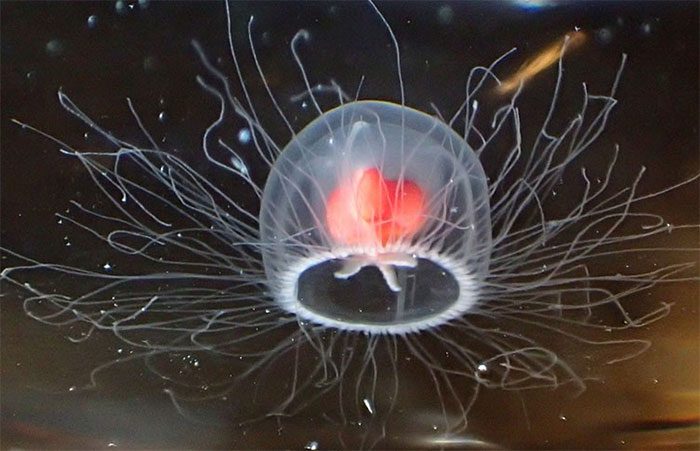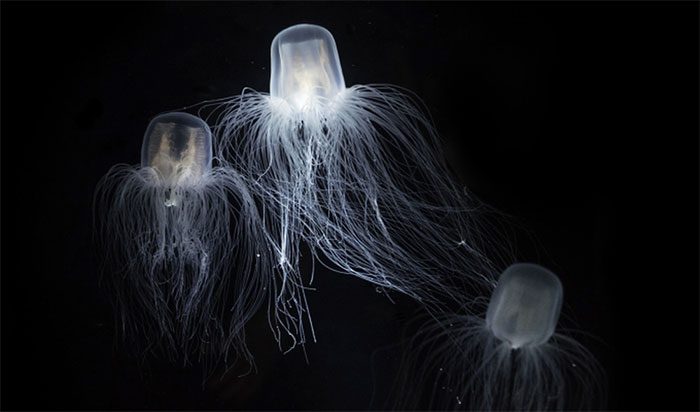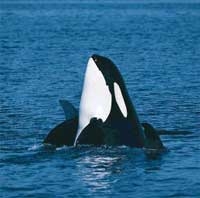Scientists in Spain have decoded the genetic makeup of Turritopsis dohrnii—a creature capable of continuously reversing its life cycle—in hopes of uncovering the secrets behind its unique longevity.
Researchers at the University of Oviedo, led by Dr. Maria Pascual-Torner and Dr. Victor Quesada, published a study on August 29 detailing the genetic sequencing of Turritopsis dohrnii, commonly known as the immortal jellyfish. This species is the only known jellyfish capable of reverting to its larval stage multiple times after sexual reproduction.

Immortal jellyfish Turritopsis dohrnii.
Like other jellyfish, Turritopsis dohrnii goes through a life cycle comprising two stages and lives on the ocean floor during its asexual phase when food is scarce. Under suitable conditions, the jellyfish will reproduce sexually.
The authors of the study noted that while many jellyfish can reverse the aging process and revert to their larval stage, most lose this ability when they reach sexual maturity. However, this is not the case for Turritopsis dohrnii. Monty Graham, a jellyfish expert and director of the Florida Institute of Oceanography, stated, “This species can perform this evolutionary trick for about 15-20 years.” This ability has led to its somewhat exaggerated title of immortal jellyfish.
For the immortal jellyfish Turritopsis dohrnii, it also undergoes similar initial steps, but when it reaches the point of death, the adult performs a rather peculiar act. Instead of dying, it reverses its life cycle, retracts into a “cysto” mass, attaches to the ocean floor, and develops into a new polyp. This polyp then produces small jellyfish, creating a repetitive cycle.
The genome of the immortal jellyfish was decoded in a 2022 study that involved reading each gene of its genetic material, akin to a gigantic instruction manual. By employing various bioinformatics tools and comparing genomes, researchers discovered that certain genetic variants contribute to the longevity and regenerative abilities of the immortal jellyfish.
These variants particularly focus on DNA repair and replication capabilities, renewal of stem cell populations, intercellular communication, oxidative damage, and the maintenance of telomeres—chromosome ends that may degrade as organisms age. All these processes are related to longevity and healthy aging in humans. They also identified a range of changes in gene expression—through a process known as differentiation—that allows the jellyfish to reset its biological clock.

Some genetic variants contribute to the longevity and regenerative abilities of the immortal jellyfish.
In the study aimed at investigating the mysterious abilities of Turritopsis dohrnii, scientists compared its gene sequences to that of Turritopsis rubra—a closely related jellyfish species that lacks the ability to “rejuvenate” after sexual reproduction.
Researchers discovered that Turritopsis dohrnii has mutations in its genome that may enable it to copy and repair DNA more effectively. They also seem to maintain the ends of chromosomes known as telomeres. In humans and other species, the length of telomeres has been shown to shorten with age.
However, Graham stated that this research does not have immediate commercial value. He clarified, “We can’t catch these jellyfish and turn them into a skincare product.”
According to Graham, this research aims to understand the processes and functions of the proteins that enable these jellyfish to “reverse aging,” thereby “opening the door to a new field of research worth pursuing.”





















































